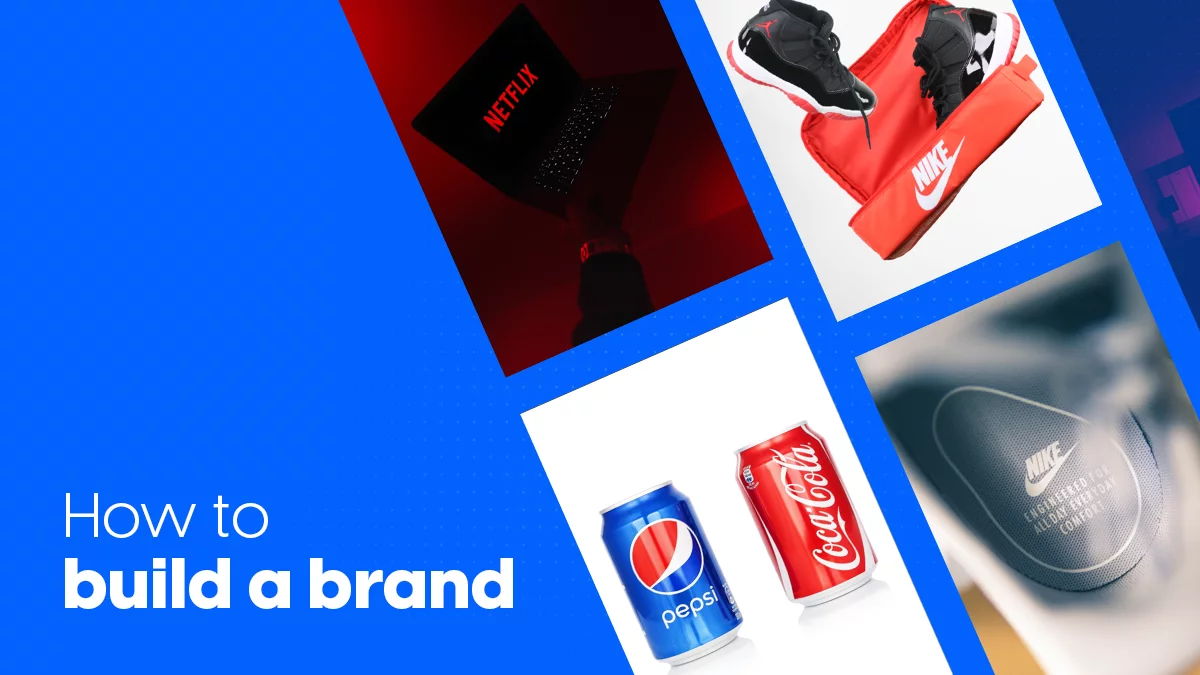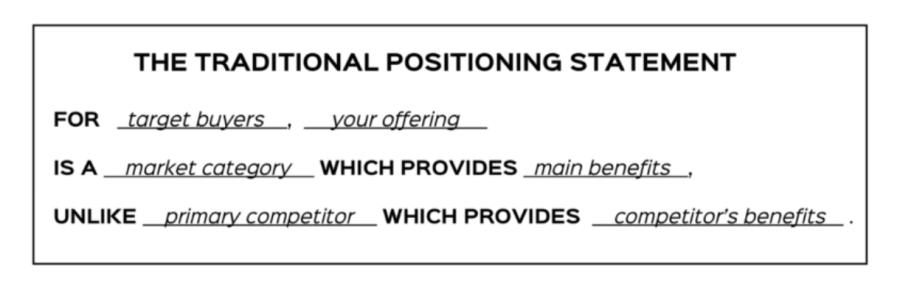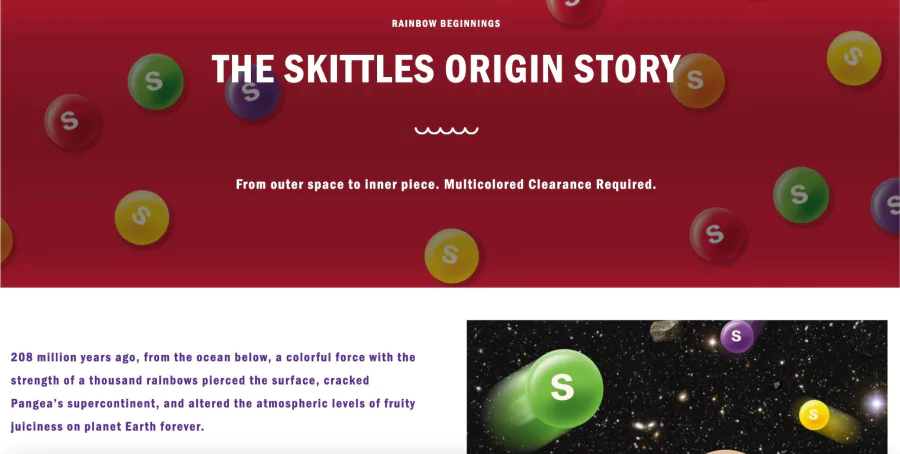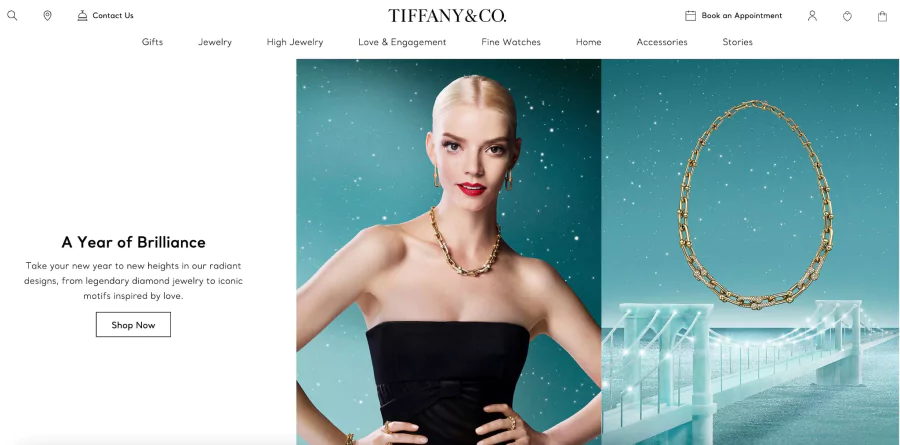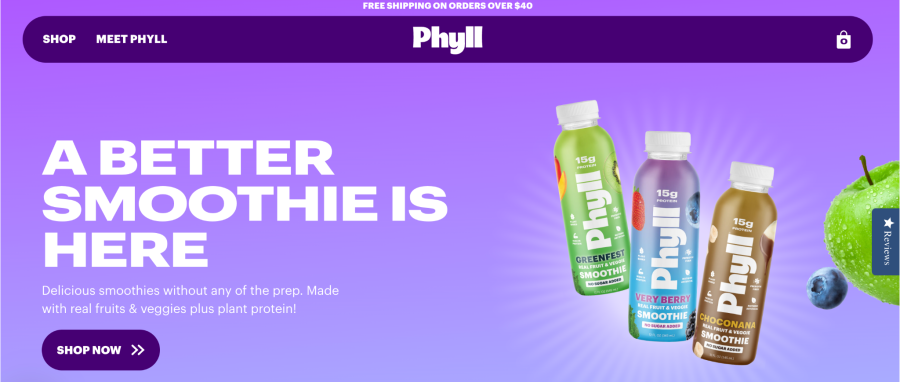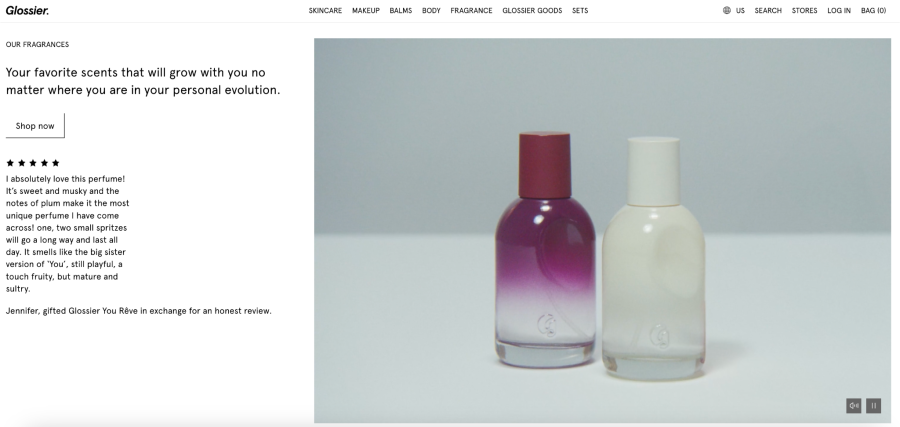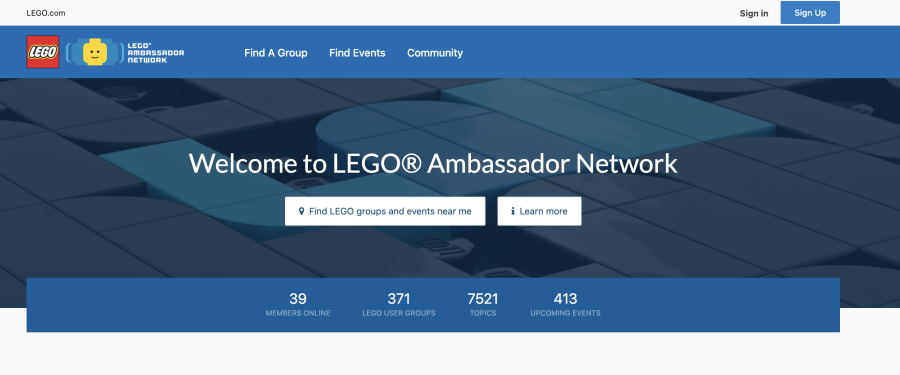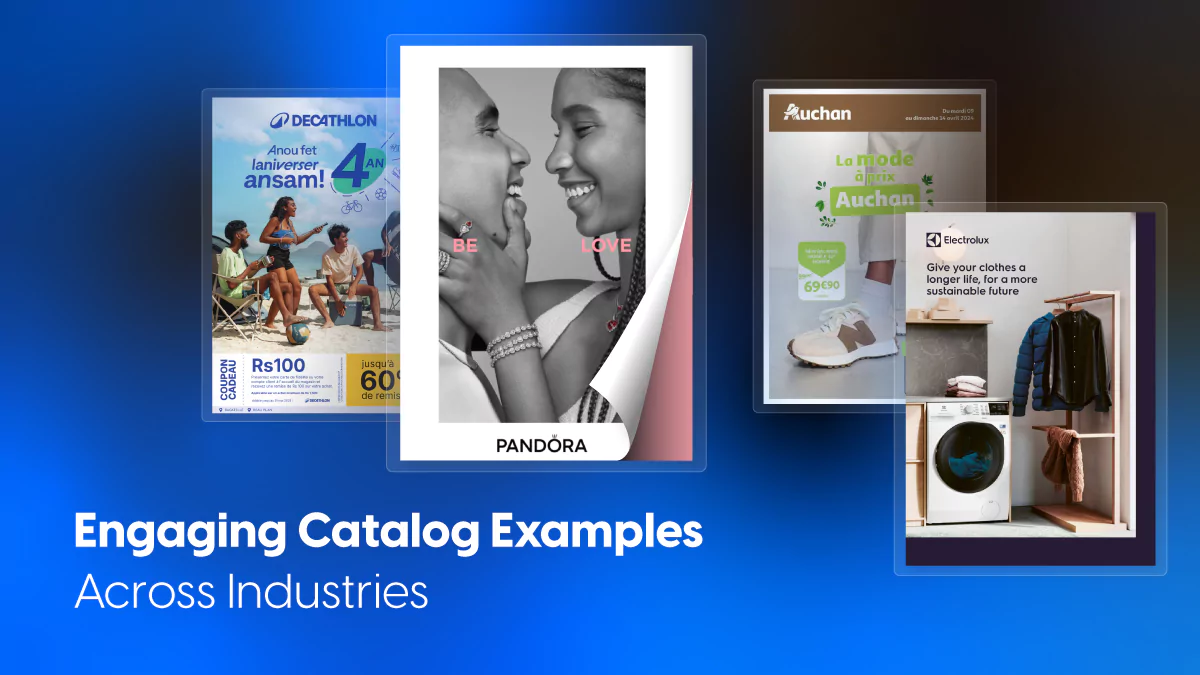How to build a brand in 2025 + examples of brands that do it right
Last updated: January 28th, 2025
Building a brand around your product or service is an important step when launching a business. A great idea doesn’t mean much if your audience doesn’t connect with it.
And when we say brand, we mean more than just a logo—it’s your personality, mission, and style.
If you manage to build a brand (even if that process is slow but steady), every marketing strategy that follows will give your service or product a real boost.
In this guide, we’ll show you how to build a brand from scratch. We’ll start with the foundation of brand building and then talk about ways to promote your brand, which are also part of the process.
So, let’s get to it.
Table of contents
What is a brand?
A brand defines your business and sets you apart in the market. It’s everything from logo and colors to the feeling and identity you create.
Think about Dr. Martens, for example. Sure, there are cheaper shoes that offer the same quality, but Dr. Martens offers a unique vibe and connection. It gives you that feeling.
A brand also has a set of rules that help you in all your marketing and communication efforts. These are part of a brand book that mentions your brand’s design standards, mission, and core values.
Now, let’s see what are the steps for creating a brand and what you need in the process.
How to build a brand from scratch: 4 steps to follow
1. Position your brand
We’re going to start by talking about brand strategy and what it means to position your brand in your target market.
April Dunford defines positioning as “The act of deliberately defining how you are the best at something that a defined market cares a lot about.”
So, when positioning your brand, you need to determine who your competitors are and then who your target audience is.
She has a formula for positioning your brand, which is really a fill-in-the-blank exercise where you create a single phrase that summarizes what your offering is all about relative to your competition.
Identify your unique attributes, correlate them with the value they bring, and then to the customer who cares about that specific benefit you’re offering.
Answer these questions to help you set up a strong positioning statement:
- Why does your business exist?
- What differentiates your business from the others in your target market?
- What problem do you solve?
- Why should people care about your business?
💡Note: Positioning should not be confused with marketing and sales communication. Instead, think of positioning as the foundation for all your communication strategies.
To position your brand, you need to research your competitors and target audience.
a) Research your competitors
When starting a business and learning how to build a brand name from scratch, you probably already have a clear idea about who your competitors are. But now it’s time to do in-depth research to see how you can differentiate your brand from theirs.
This includes knowing how they approach their products and how they’re doing marketing.
Take a closer look at their products and how they use both offline and online mediums to their advantage. Visit their websites and blogs to figure out why they rank high in search results. If they have a blog, read it to understand why Google considers their content valuable. Examine their website’s loading speed, structural integrity, and information presentation.
To streamline your competitive research process, especially when analyzing multiple competitors, consider implementing web scraping. This automated approach helps you efficiently gather and analyze competitors’ pricing strategies, product descriptions, content updates, and market positioning across their digital platforms, particularly when combined with a selenium proxy to bypass restrictions and simulate human-like browsing behavior. If certain websites block your access, you can use advanced scraping setups designed to bypass Cloudflare protection responsibly while ensuring compliance with data access rules.
While you’re at it, take a closer look at their marketing strategy. How do they reach their target audience? Follow them on social media to see what they post and what type of messaging they use.
And now, the million-dollar question: how do you differentiate yourself from them? What do you offer that they don’t? This is called your unique selling proposition (USP), and you should build your brand around it.
For example, how would you convince people to buy your water when there are so many other brands out there? Give it a unique name like Liquid Death, use bold packaging, punchy messaging like “murder your thirst,” and focus on environmental commitment. Their mountain water comes in tallboy cans resembling beer cans, emphasizing their anti-plastic stance with recyclable aluminum.
Or, maybe you have that one feature that the others don’t offer. It could be that you have a better VoIP phone service, which allows you to provide seamless customer service compared to other competitors. Please do yourself a favor and advertise it.
What I’m trying to say is that you should look deep into your offerings and what your competition offers. You’re selling to the same pool of potential customers, so you need a strong differentiator before deciding on your positioning.
b) Research your target audience
Understanding your potential customers is crucial when building a brand from scratch. Besides knowing your competitors, developing a unique brand identity happens once you know who you’re building it for, which means defining your target audience is key.
Focus on the platforms they use most—forums social media included—to observe their language, slang, and how they engage with other brands. These insights help you understand where and how best to reach them.
While documenting this part, you should create and define your buyer personas.
Develop detailed profiles of your ideal customers, including demographics, interests, and pain points. This helps tailor your brand message to their needs. Demographics can also have an impact on their psychology. The same message won’t appeal to groups of people in different parts of the country or world.
Other ways to understand your audience when learning how to create a product brand:
- Conduct surveys and interviews: Engage directly with potential customers through surveys and interviews to gather firsthand insights into their preferences and behaviors.
- Analyze online communities: Join forums, social media groups, and online communities related to your industry. Observe discussions and trends to understand what matters most to your audience.
- Monitor competitor interactions: Pay attention to how your competitors interact with their audience. Look at the comments and feedback they receive to identify gaps and opportunities for your brand.
Consider, for example, Form Health, a health, wellness, and weight loss help company with a unique telehealth service that offers personalized plans and coaching with professionals in the field. Another example in the same sphere can be weight loss subscription services that offer effective ways of losing weight through semaglutide tablets. By promoting these distinctive features, they can differentiate themselves from their competitors and address their clients’ needs in a tailored way.
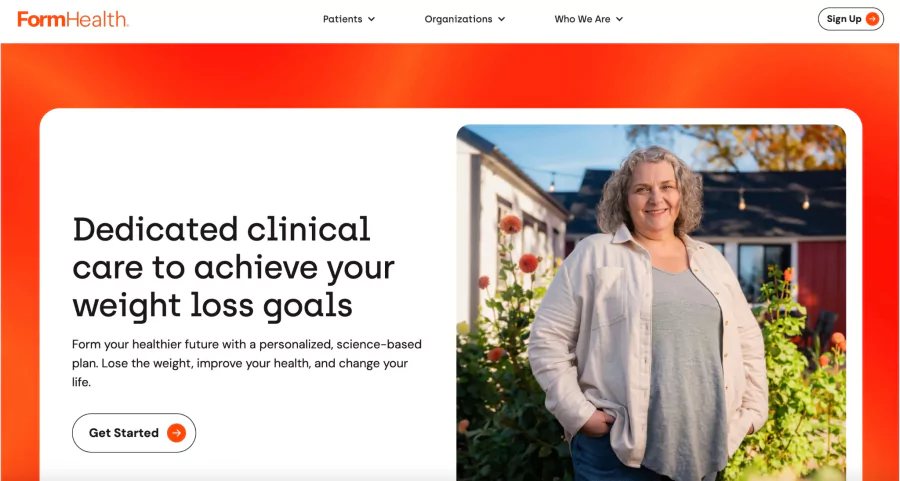
2. Build your brand personality
Brand personality refers to the human characteristics and traits attributed to a brand. It’s about the brand’s voice, tone, and values, making it relatable to consumers. So, when you’re thinking about how to start a brand from scratch, consider how to connect with your customers emotionally.
When building your brand, you need to understand that you can’t address everyone. Finding your niche means finding your brand’s personality.
a) Establish your brand voice and tone
Brand building is also about shaping your brand voice and tone, which is how you sound to customers and what they feel when they interact with you.
Create a list of dos and don’ts for your language. Tailor your tone to different communication channels like social media or customer service and match your tone with your buyer personas.
For example, a law firm needs a different tone than a pet care service.
Adaptability is key for brands. Those who adapt thrive. Those who don’t become obsolete. Take Old Spice, which rebranded to appeal to a younger crowd. New ads, packaging, and tone turned everything around, making it a top rebranding success story.
Start with your target audience. Think about how to communicate and engage with them. Work on your tone of voice, considering all channels you’ll use, and create a content style guide that covers:
- Technical content
- App copy
- Social media content
- Email communication
- Landing page copy
- Blog posts
- Translations
- Any other communication channel
A good example here is Skittles. The brand uses humorous language, so much so that you expect their ads and product descriptions to be funny. Or their origin story:
b) Write your brand’s story
Your brand story tells people how you started, and sometimes that means your journey as a founder. It humanizes your brand, creating meaningful connections with customers. People want genuine relationships with brands. A compelling, transparent story helps you achieve this.
Even if you’re not a household name, people love hearing how you started, your motivations, and your goals.
Take, for example, POPFLEX, a brand started by Cassey, who “could not find a cute bag to hold her yoga mat, keys, CD, water bottle and towel. So, she decided to create her own.”
She designs thoughtful women’s activewear, always starting from a pain point and creating something that is not only useful but also cute.
Personal connection is important for any business. If you can, travel and promote your products to other markets. Many new business owners avoid this because they find travel too expensive for their startup, but the truth is that there are plenty of good providers out there. You can have fun, experience new things, tell your story, and make a name for yourself in the process.
c) Set your brand values
Brand values are the heart and soul of your business. They are the guiding principles that define who you are, what you stand for, and why you do what you do. Think of them as your brand’s DNA—essential, unique, and influential in shaping every decision you make.
Having strong brand values is crucial because they create a solid foundation for your brand’s identity and actions. They help you connect with your audience on a deeper level, foster loyalty, and differentiate you from competitors. When customers resonate with your values, they are more likely to trust and support your brand.
Consider Patagonia. This outdoor apparel company has built its entire brand around environmental sustainability and social responsibility. Their core values include creating the best product, causing no unnecessary harm, and using business to protect nature.
Patagonia doesn’t just talk the talk; they walk the walk.
They donate a percentage of their profits to environmental causes, use recycled materials in their products, and even encourage customers to repair and reuse their gear instead of buying new items. These values resonate with their audience, creating a loyal customer base that supports not only the products but the mission behind them.
The best way to build a brand from scratch is to start with your core values in mind. This will set the tone for everything else and will help you start off on the right foot.
d) State your brand mission
Think of your brand mission as your ultimate goal—the driving force behind everything you do. It sets the stage for your strategies, decisions, and actions and guides your company toward its vision of success.
A clear mission gives your brand direction and focus. It inspires and motivates your team, aligns your efforts, and communicates to customers why your brand exists.
A good example is Warby Parker.
Their mission is “to offer designer eyewear at a revolutionary price while leading the way for socially conscious businesses.” This mission drives Warby Parker to provide high-quality, affordable eyewear while also giving back to the community. For every pair of glasses sold, they distribute a pair to someone in need. This mission isn’t just about selling glasses; it’s about improving access to vision care and making a positive impact on the world.
3. Build a brand identity
When building a brand from scratch, you’ll also have to think about the name of your brand and other elements that will define your brand’s appearance.
a) Choose the business name
Your brand name is a huge commitment and one of the first steps in building your brand identity. It should be distinctive and memorable and ideally have available social media handles and domain names. If your first choice isn’t available, get creative, but keep in mind that this is one of the first things people will hear about, so it’s a big deal.
Here are some quick tips:
- Keep it simple: Avoid names that are hard to spell or pronounce.
- Think about its meaning: Pick something that reflects your brand’s values or what you offer.
- Check for trademarks: Make sure your name isn’t already in use to avoid legal issues.
- Test it out: Say it out loud and ask for feedback to see how it resonates.
- Be future-proof: Choose a name that won’t limit you if your business grows.
b) Create a slogan
When making your own brand, think about a slogan that stakes your brand’s claim in the market in just a line or two. It should highlight what you sell, who it’s for, and what makes you unique. Your unique value proposition is your edge in a crowded market.
Once you’ve established your positioning and your brand story, it’s easier to come up with a slogan for your business. A good slogan is short and makes a strong impression. Also, a slogan comes as an addition to your logo; they should complement each other.
An example of a catchy slogan that says a lot in just a few words is the one from L’Oréal Paris: “Because you’re worth it.”
What are the key aspects of a tagline or slogan?
- Memorable – you don’t need a full dictionary, just a few well-chosen and placed words. We instantly recognize Nike’s ‘Just do it‘ or McDonald’s ‘I’m lovin’ it.’
- Unique – your motto must draw attention to you. It must not be confused with another company.
- Evoking – It should spark a reaction. An effective motto appeals to emotion.
- Transparent – It should make your company’s intent clear to your audience.
c) Choose your colors
When creating your brand, having a color palette is a must.
Colors speak volumes about your brand. That’s why there’s an entire color theory behind this. Colors convey emotions, set moods, and can influence how customers perceive your brand. This makes selecting your brand’s color palette an essential step in building a strong brand identity.
Colors have the power to evoke specific feelings and associations. For instance, blue often conveys trust and professionalism, which is why many financial institutions use it. On the other hand, red is associated with excitement and passion, making it a popular choice for brands looking to grab attention.
When selecting your brand colors, consider what you want your brand to communicate. Do you want to go for a calm and serene vibe, or do you want to exude energy and excitement? Your brand’s values and personality should guide your choice of colors. It’s also essential to think about your target audience and what might appeal to them.
Example: The luxury jewelry brand Tiffany & Co. is renowned for its distinctive Tiffany Blue, a color registered as a trademark. This robin egg blue is used in everything from packaging to advertising, evoking elegance, luxury, and timelessness.
When choosing colors to create your own brand, it’s important to think about how they work together. You’ll want a primary color that represents your brand and a set of complementary colors to use as accents. This combination should be versatile enough to work across various platforms and materials, from your website to packaging and social media.
Here are some quick tips for choosing your brand colors:
- Understand color theory: Familiarize yourself with basic color theory. Know which colors are complementary, analogous, or contrasting. This knowledge helps in creating a balanced and appealing color scheme.
- Consider cultural associations: Colors can have different meanings in different cultures. Make sure your color choices align with the cultural context of your target market.
- Test for accessibility: Ensure your colors are accessible. High contrast between text and background is crucial for readability, especially on digital platforms.
- Limit your palette: Stick to a limited color palette to avoid overwhelming your audience. A primary color, a couple of secondary colors, and a few neutrals can create a cohesive look.
- Think long-term: Choose colors that can grow with your brand. Trendy colors might seem appealing now, but they can date your brand quickly.
As a general rule:
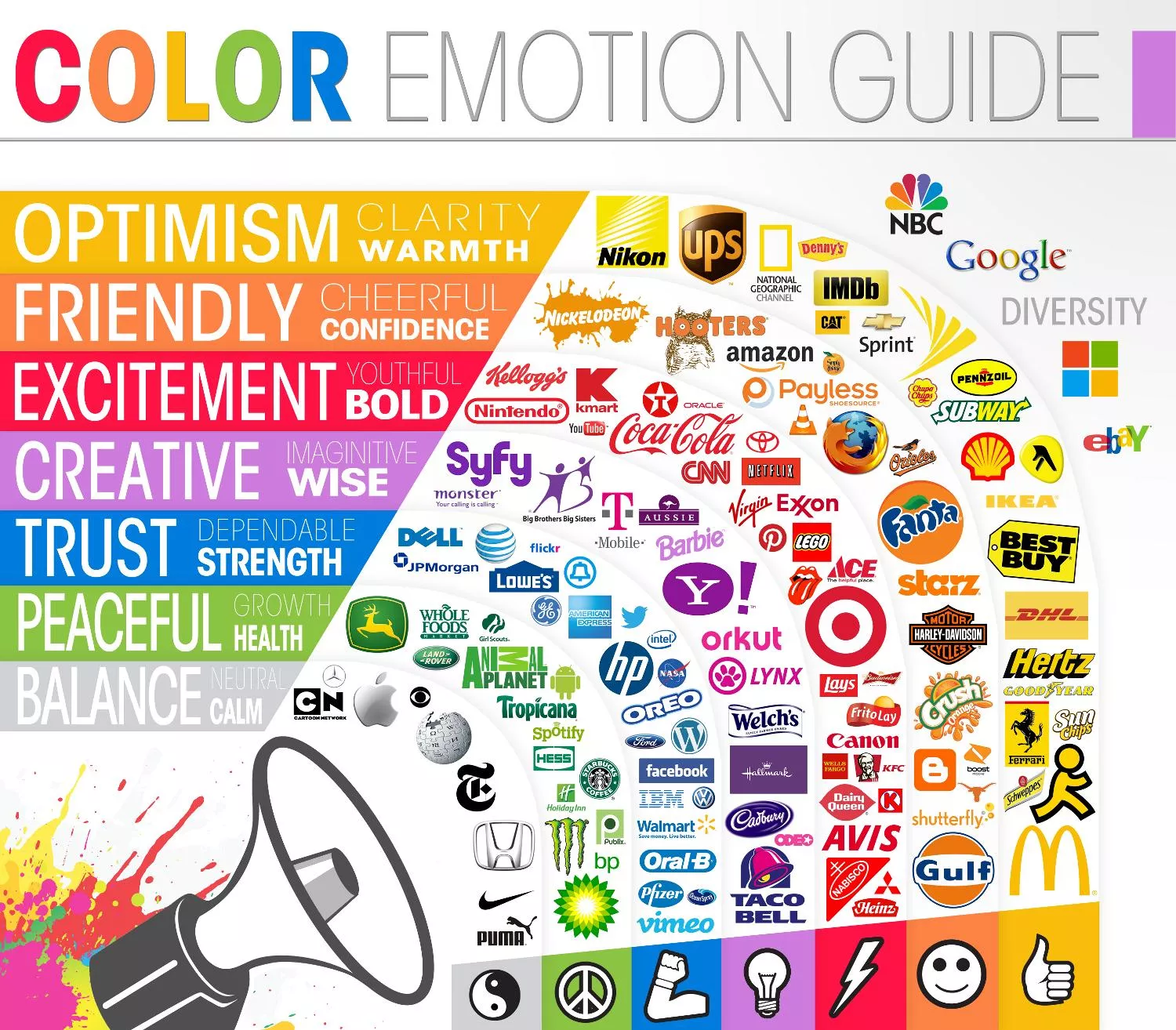
d) Choose your fonts
Fonts work hand-in-hand with colors and other design elements to create a cohesive visual identity.
Choosing the right fonts for your brand is like picking the perfect outfit for an important event—it sets the tone and makes a statement. Ideally, you should select two main fonts: one for headings and one for body text. This combination ensures readability and a consistent look across all your branding materials.
Let’s take Mailchimp as an example. They use a playful, rounded font for their logo, which matches their friendly, approachable personality. Their website and marketing materials use clean, easy-to-read fonts for the body text, making sure the information is accessible and engaging.
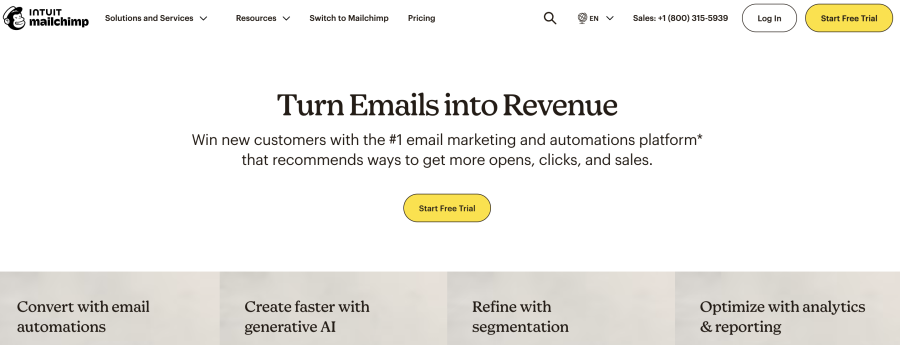
When it comes to your logo, the font you choose should reflect your brand’s essence. A tech brand might go for sleek, modern fonts to convey innovation, while a handmade crafts brand might opt for something more rustic and personal.
Fonts should also be versatile. Your logo needs to be scalable and work across different sizes and formats. It should look just as good on a digital business card as it does on a billboard. This might mean creating a few variations of your logo: one with the full brand name, one with just initials, or a simplified version for small spaces like social media avatars.
Consider how your fonts will appear in different contexts. Will they be legible on various backgrounds and in different sizes? How will they look in black and white or over your brand’s color palette? Testing your fonts in real-world scenarios can help you make the best choice.
e) Choose your graphic and aesthetic elements
Some founders and designers choose to include graphic elements when they build brands. They can include patterns, illustrations, icons, and photography styles, all of which work together to enhance your brand’s visual language.
- Patterns and textures
Patterns can add depth and interest to your brand’s visuals. They can be simple, like stripes or polka dots, or more complex, like custom illustrations. Textures, such as a grainy background or a watercolor effect, can also give a unique feel.
- Illustrations and icons
Custom illustrations and icons can set your brand apart and add a personal touch. These elements can range from hand-drawn sketches to sleek, modern graphics.
- Photography style
The style of photography you use can say a lot about your brand. Are the photos bright and colorful or muted and minimal? Do they feature real people using your products, or are they more abstract? Consistency in your photography style helps build a recognizable brand image.
- Graphic elements
These include shapes, lines, and other design elements that can be used to enhance your visuals. For instance, geometric shapes can give a modern and structured look, while organic shapes can create a more relaxed and approachable feel.
- Typography
While fonts are essential, how you use them in your graphics is equally important. Typography can be a graphic element on its own, especially when used creatively. Bold headlines, artistic type treatments, and unique layouts can all contribute to a strong visual identity.
- Animations and motion graphics
Animations and motion graphics are powerful tools. They can bring your brand to life and make it more engaging.
An example of a brand with many of these elements is Oatly, which produces oat-based products. Oatly uses quirky, hand-drawn illustrations, bold and playful typography, and a unique color palette that makes their products stand out on the shelves. Their use of witty and humorous copywriting, combined with these graphic elements, creates a cohesive and memorable brand that appeals to their target audience.
f) Design your logo & other brand assets
We didn’t forget about the logo. It’s often the first interaction someone has with your brand, so it needs to be unique, scalable, and reflective of your brand’s essence.
We saved it for last because although we recognize its importance, we think that the rest of the elements mentioned earlier should precede it.
Logos should always be designed after you have a clear grasp of your mission, product or service, and target audience. For starters, using a logo maker can help you experiment with different design elements before committing to a final version. Using a logo maker can help with ideation, but generally it’s better to hire a designer to help you.
Your logo needs to be versatile and effective across various platforms. Whether it’s on your website, social media, product packaging, or email marketing, it should maintain its impact. You might need different versions for various applications, such as a simplified version for social media avatars or browser favicons.
For example, the Dropbox logo is simple and recognizable. It is designed to look like an open box, symbolizing storage and accessibility. The logo adapts well to different mediums and sizes, from website headers to mobile app icons.
Remember, your logo is more than just a visual mark. It’s a symbol of your brand’s story and identity. Make sure to create a logo that resonates with your audience and aligns with your overall brand strategy. Consistency is key, so integrate your logo with your other brand assets, like color schemes, typography, and graphic elements, to create a cohesive and memorable brand experience. Professional branding services can help ensure this alignment and bring your brand vision to life effectively.
4. Build an online presence
When creating your own brand, you need to know how to develop a brand online, where most of the action happens nowadays. Implementing effective SEO services for startups or other businesses is crucial for ensuring that your brand stands out and is easily discoverable online. So, here are a few fundamental things you should take into account:
a) Create a website
When you have every detail about your brand identity and personality, it’s easy to create your official website. This will be the digital face of your brand, so make it count.
Make sure it’s easy to navigate, visually appealing, and mobile-friendly. Include essential pages like About Us, Services/Products, Blog, and Contact – all while using the colors, fonts, and writing style you established previously.
Also, make sure to use SEO best practices to make your site discoverable on search engines.
Example: Phyll has a sleek, easy-to-navigate website that showcases their products and provides some facts about their products in a cool way.
b) Social media profiles
Here’s how to build a brand on social media. The first step is to identify where your audience spends their time and establish your brand’s presence there. Whether it’s Instagram, Facebook, LinkedIn, X, or TikTok, make sure your profile is consistent with your brand’s identity. Post regularly on social media and engage with your audience through comments, messages, and shares.
Example: SEMrush has a witty, funny, and engaging presence on LinkedIn, which keeps their audience entertained and involved.
c) Email strategy
Email marketing remains one of the most effective ways to reach your audience. Build a subscriber list through your website and social media channels. Send regular newsletters with valuable content, updates, promotions, and personalized messages. You can use segmentation to tailor your messages to different audience groups, or contract an email marketing service to do it for you.
Example: Polaroid sends personalized and engaging emails that highlight new products, special offers, and tips on how to capture beautiful moments.
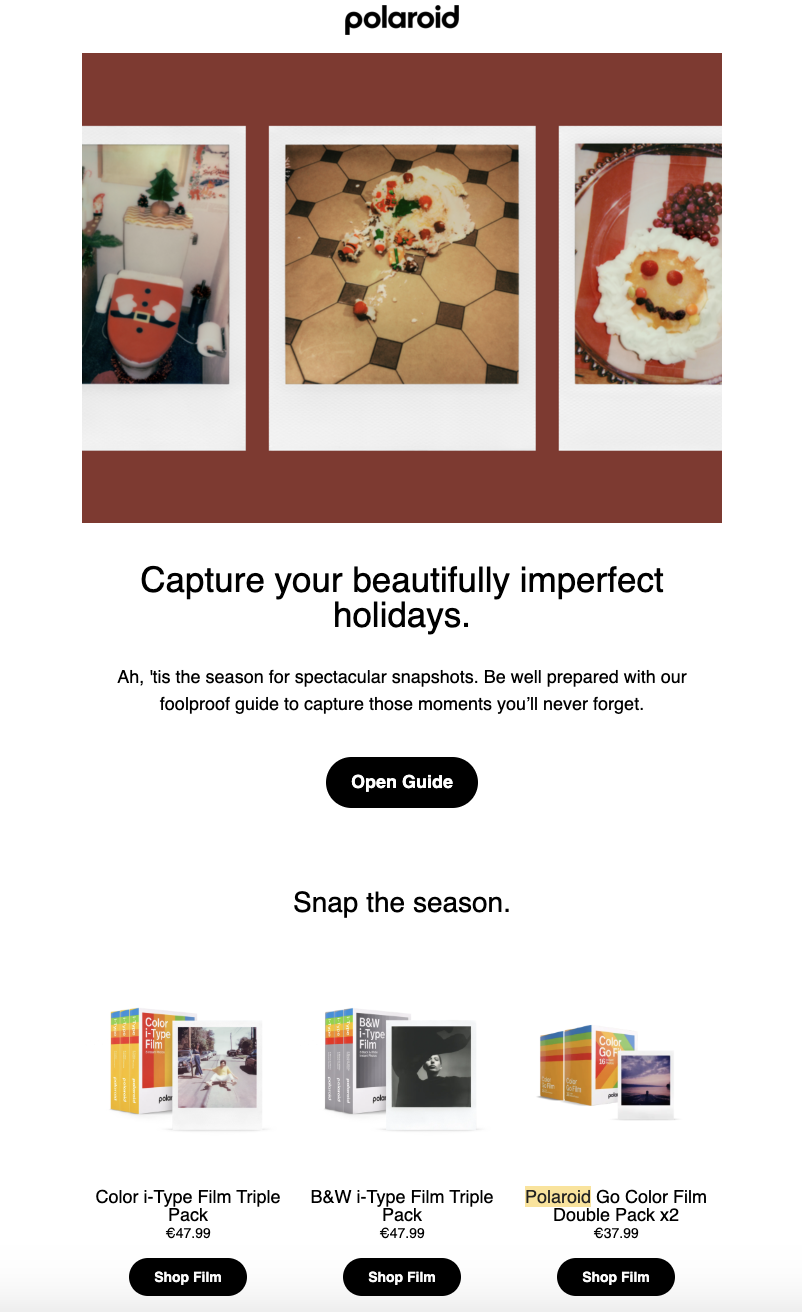
d) Content marketing
Create valuable and relevant content that speaks to your audience’s needs and interests. This can be blog posts (which should be SEO optimized), videos, infographics, podcasts, or social media posts. Consistent content creation helps establish your brand as an authority in your industry and keeps your audience engaged. To enhance user engagement, you can embed Instagram feed for free on your website, showcasing user-generated content and social proof to strengthen your brand’s credibility.
Example: HubSpot offers a wealth of free resources, including blog posts, ebooks, and webinars, positioning them as a leader in inbound marketing.
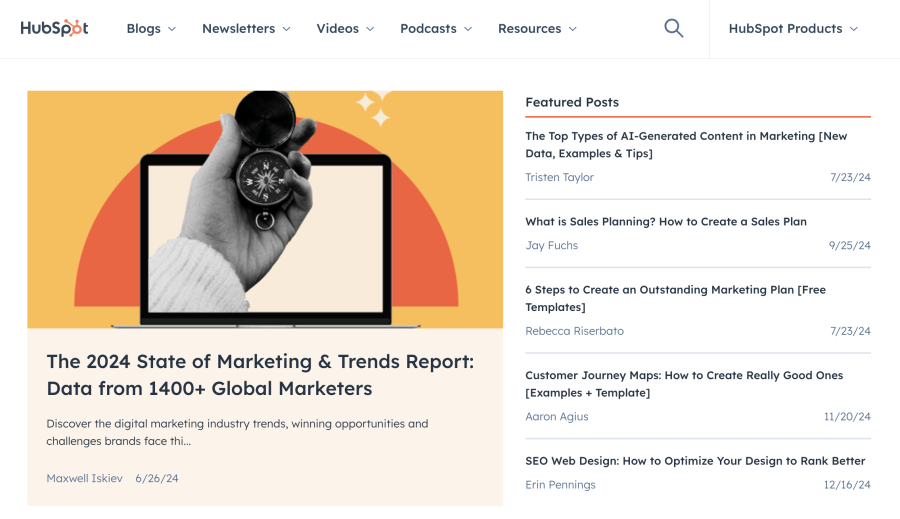
e) Online advertising
You can pair your organic content with paid ads to boost your reach. Google Ads, Facebook Ads, Instagram Ads, and LinkedIn Ads allow you to target specific demographics and interests. This can drive traffic to your website, increase brand awareness, and generate leads.
You can start with a small budget per day and check how your ads perform after a while. Then, you can adjust your ad campaign and budget accordingly.
Example: Squarespace became quite popular for its Super Bowl ads and their partnership with celebrities. Last year, they did it again, with Martin Scorsese as the main character.
Maybe you don’t have the budget, or you don’t need to invite such a big name, but you can still partner with an influencer to add more credibility and that wow effect to your ads.
f) Online reviews and testimonials
People are more confident to buy from you if they read a few positive reviews. That’s why you should encourage satisfied customers to leave reviews on platforms like Google My Business, Yelp, and Trustpilot. Then, you can display testimonials on your website and social media to build trust with potential customers.
Example: Glossier features customer reviews on their product pages to enhance credibility and encourage new customers to buy.
g) Community engagement
Build a community around your brand by engaging with your audience on forums, social media groups, and through live events or webinars. Participate in industry discussions and offer value without always pushing your products.
Example: LEGO has built a strong online community where fans share their creations, participate in challenges, and connect with fellow enthusiasts.
Maintain brand consistency
So far, so good. We talked quite a bit about how to build a brand from the ground up, and the next step is to focus all your efforts on maintaining brand consistency.
Building and maintaining brand consistency shouldn’t be that big of a struggle if you’re a one-man show or have a rather small business.
The real struggle begins when you have a lot of people involved in communicating for your brand. Keeping brand consistency across all your communication channels is what makes a brand recognizable.
To make things easy for everyone, the best thing to do is to create a brand book.
This will contain the most important notes that you’ve outlined so far: your mission statement, values, voice, logo, and website. Here’s how to build a brand PDF with Flipsnack:
Flipsnack’s branding customization helps brands maintain consistent and professional branding across all digital publications. It offers customizable publication links, a dedicated brand library, and branded templates to ensure your brand identity stays intact.
With features like interactive content, team collaboration tools, and fully branded emails, Flipsnack makes it easy to create engaging and on-brand flipbooks.
You can upload custom fonts and colors to ensure your visuals always align with your brand guidelines, making your communication materials recognizable.
Basically, whether you want to create marketing materials from scratch or use one of the many professionally designed templates, build a brand kit and have it at your disposal every single time you’re designing.
Conclusion
Building a brand doesn’t end once you design a logo. It’s an ongoing effort to keep your brand identity strong and your marketing on point. As your business grows, your brand might need to change to keep up with new trends or values. If you rebrand or redesign, make sure your loyal customers can still recognize and connect with you. Always listen to your customers’ feedback. They are the ones who will help your brand grow and succeed.
How long does it take to build a brand? Well, building a brand is not an overnight process. It can take from 6 months to 2 years to establish a strong and recognizable brand, but it all depends on your resources and on how well you define your mission, values, and audience. It also depends a lot on your audience’s response. That’s why you shouldn’t rush the process and be consistent in all your brand-building efforts.
